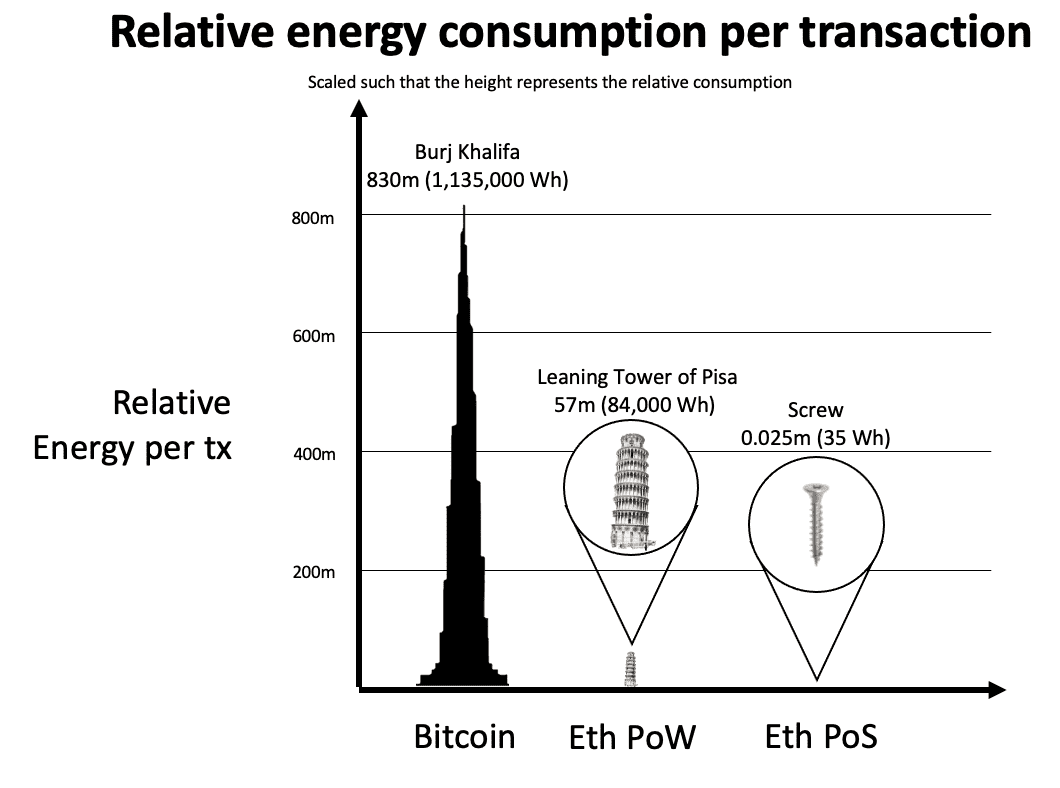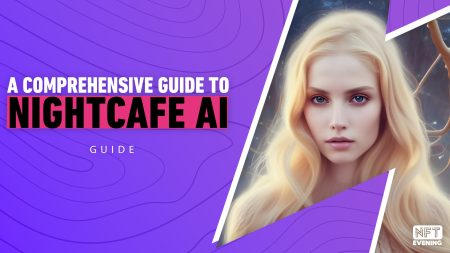As with all new technologies in their early stages, NFTs get all kinds of criticism. Some fair, some misinformed. However, the idea that NFTs have a negative environmental impact is worth talking about. Indeed, some people believe that the carbon footprint of NFTs is big enough to damn the entire industry.
To be sure, NFTs are part of a larger system that uses a lot of energy. While this may be true, saying that NFTs are therefore bad for the environment is an overly simplistic judgment. There are important nuances to understanding the true environmental impact of NFTs. What’s more, this is a space that is doing more to lower its carbon footprint than many traditional industries, and much quicker.
With all that said, let’s explore what the environmental impact of NFTs actually is, and the actions the NFT and crypto worlds are already taking to address it.

NFTs Take Blame For The Environmental Impact Of Blockchains
Firstly, we need to understand where the truth is in this criticism of NFTs. This critique has more to do with the blockchain technology that powers NFTs, than NFTs themselves.
The environmental impact of the blockchain came sharply into focus earlier this year. This was mainly due to a study that Cambridge University published in February. Significantly, it determined that the annual energy usage of Bitcoin mining would put it in the top 30 list of countries by energy use.

The Proof Of Work Consensus
To put it simply, mining is the process that creates Bitcoins. Another key point for this conversation is the way that Bitcoin mining happens.
As the first cryptocurrency, Bitcoin needed to create a decentralized way to confirm transactions on its blockchain. The model it uses is known as Proof Of Work (PoW).
In essence, PoW involves miners competing with each other to be the first to solve hashes – think of these as complex puzzles – made by Bitcoins PoW algorithm. The miner who solves it first then gets to add that new block of transactions to the blockchain. As a result, that miner gets a reward via newly minted Bitcoins, and network transaction fees.

On one hand, PoW works well because it’s secure, rewards miners for verifying transactions, and makes it easy for miners to verify newly added blocks. On the other hand, PoW is inefficient, slow, and requires transaction fees from blockchain users and expensive computer equipment for miners.
Most importantly, in this case, PoW uses a ton of energy. Being that it needs lots of miners to run computers solving hashes nonstop. For that reason, PoW has a big environmental impact.
Ethereum, The Main Blockchain For NFT Smart Contracts, Uses PoW
So now we’ve gone over how PoW works in the blockchains that use it. Ethereum is one such blockchain.
Equally important to point out here, is that PoW isn’t just for minting new ETH tokens. On the contrary, PoW is used to confirm all transactions on Ethereum. That is to say, all transactions that use ETH as a currency are verified through PoW.
Thus, we can see that all ETH NFT transactions use this high energy usage model. In effect, Ethereum’s use of PoW, is the root of the “NFTs have a negative environmental impact” critique.

How Much Of Ethereum’s Carbon Footprint Are NFTs Actually Responsible For?
So the question then becomes – how much blame should NFTs take for the environmental impact of Ethereum? In short, the answer is not much at all.
As much as NFTs have overtaken Ethereum itself in the news this year, they only contribute to a tiny fraction of the total transactions on the network.
Of course, it is hard to say precisely how the growth of NFTs has shifted the use of Ethereum. Even so, most estimates suggest NFTs are only a small part of Ethereum transactions.
For example, the data company Coin Metrics estimated there were 30,000 NFT transactions out of 1.2 million Ethereum transactions on one given day. That’s 2.5%. Another estimate from the NFT marketplace Nifty Gateway puts the number at 1%.
Even if these numbers are significantly off, they point to an Ethereum network that would still be very energy-intensive without any NFT transactions at all. To put it another way, the idea of blaming NFTs for the environmental impact of the Ethereum network is kind of like blaming a single passenger on a train for the energy usage of the entire New York City Subway system.
In any case, just because NFTs aren’t as bad for the environment as many people like to say, doesn’t mean that looking to lower the environmental impact of NFTs isn’t worthwhile. To that end, let’s explore a couple of different factors likely to help lower the carbon footprint of NFTs.
Lowering The Environmental Impact Of NFTs

Ethereum Will Be Moving To Proof of Stake
At this instant, Ethereum is still the major blockchain for NFTs. This means that as Ethereum’s environmental impact decreases, so does the impact of most NFTs being traded today.
Clearly, the high energy usage of PoW is a major issue. And it’s one that Ethereum itself is dedicated to tackling. As a matter of fact, Ethereum has a whole section of its website to address this. Above all, it talks about how its move away from PoW will lessen its carbon footprint.
To explain, the blockchain will be switching its consensus model as part of its major network upgrade to Ethereum 2.0.
It’s important to realize that while PoW was the first blockchain consensus model, it isn’t the only one. For example, the most notable alternative to PoW is Proof of Stake (PoS). PoS has different advantages and drawbacks compared to PoW, but we’re going to focus on the environmental impact of each.
PoS doesn’t ask its network validators to compete to solve hashes to verify transactions. Instead, they lock up or, “stake” the native currency, which allows them to validate new blocks. As a result, PoS needs way less energy, making its environmental impact much smaller than PoW.
Existing Blockchains With Lower Environmental Impact Than Ethereum
Of course, there are other blockchains out there that already use PoS. As such, they have a much lower carbon footprint than Ethereum. Not to mention lower transaction fees and faster networks.

Solana
Without a doubt, Solana is Ethereum’s main competitor when it comes to NFTs. Indeed, the blockchain has attracted many users due to its low transaction fees. By all means, its use of a PoS model allows it to also top Ethereum when it comes to lower energy use.
In its first “Energy Use Report”, Solana notes that a single transaction on its network takes, “less energy than two Google searches, and 24 times less energy than charging your phone”.
Cardano
Cardano is the next biggest Eth-alternative chain that has NFTs. Like Solana, it uses the PoS consensus, meaning it is also very energy efficient. While its NFT market is much smaller than Solana and Ethereum, it continues to be an attractive option for people who want NFTs on non-Ethereum blockchains.

Layer 2 Scaling Solutions For Ethereum Can Help With Carbon Footprint
Layer 2 solutions (L2s) are applications that solve some of the issues with Ethereum by handling transactions off of the main Ethereum network. There are a few L2s out already with healthy NFT ecosystems. Some of them explicitly claim to lower the environmental impact of their NFTs by being carbon neutral.
Polygon
Polygon is one of the largest L2s. It uses the PoS consensus and has over 3000 decentralized applications (DApps) in its ecosystem. While it has far fewer NFTs on its chain than Ethereum at the moment, it does include some big names.
For instance, major metaverse platform The Sandbox announced earlier this year that it will migrate to Polygon. What’s more, it is possible to use Polygon’s currency MATIC, on Opensea. Many major NFT projects use Polygon for their community airdrops. Though that is mostly to avoid Ethereum gas fees.

Immutable X
Immutable X claims the title of being the first Ethereum L2. Notably, it promises that any NFT created or traded on its network is 100% carbon neutral. The promise of carbon neutrality and no gas fees has attracted some big NFT names to Immutable X. This includes many blockchain games and the major NFT marketplace, VeVe.
Eco-friendly Crypto Services
Nori
Nori is a marketplace for carbon removal. Not only that, but it even has its very own cryptocurrency. The platform released the NORI token hoping to make it a price-setter for carbon removal. Nori also has had some big NFT partners such as The Sandbox and Rarible.
Offsetra
Offsetra has become a popular tool for NFT creators. The service helps businesses and individuals calculate their carbon footprint and then offset it. Offsetra works with both individual NFT artists and with larger NFT projects like CryptoVoxels. It even launched a service that allows users to calculate their carbon footprint using their Ethereum wallet address.

Zer00 by CurrencyWorks
Although not directly tied to NFTs, Zer00 is an interesting project from the company CurrencyWorks. It uses a zero-emissions method that turns waste into energy. Then, it uses that energy to mine cryptocurrencies. In this way, it solves the main problem of blockchains when it comes to their environmental impact.
Expect To See More Eco-Friendly NFT Moves in 2022
There were a number of NFT projects that came out this year with the goal of helping the environment in one way or another. In addition, projects like the Crypto Climate Accord were launched to address the carbon footprint of the space.
All things considered, the doom and gloom talk around NFTs’ effect on the environment seems a bit unfounded. In any case, the fact that the young industry is doing so much so early feels like solid proof that the space is heading in the right direction. At least when it comes to its environmental impact.
All investment/financial opinions expressed by NFTevening.com are not recommendations.
This article is educational material.
As always, make your own research prior to making any kind of investment.








